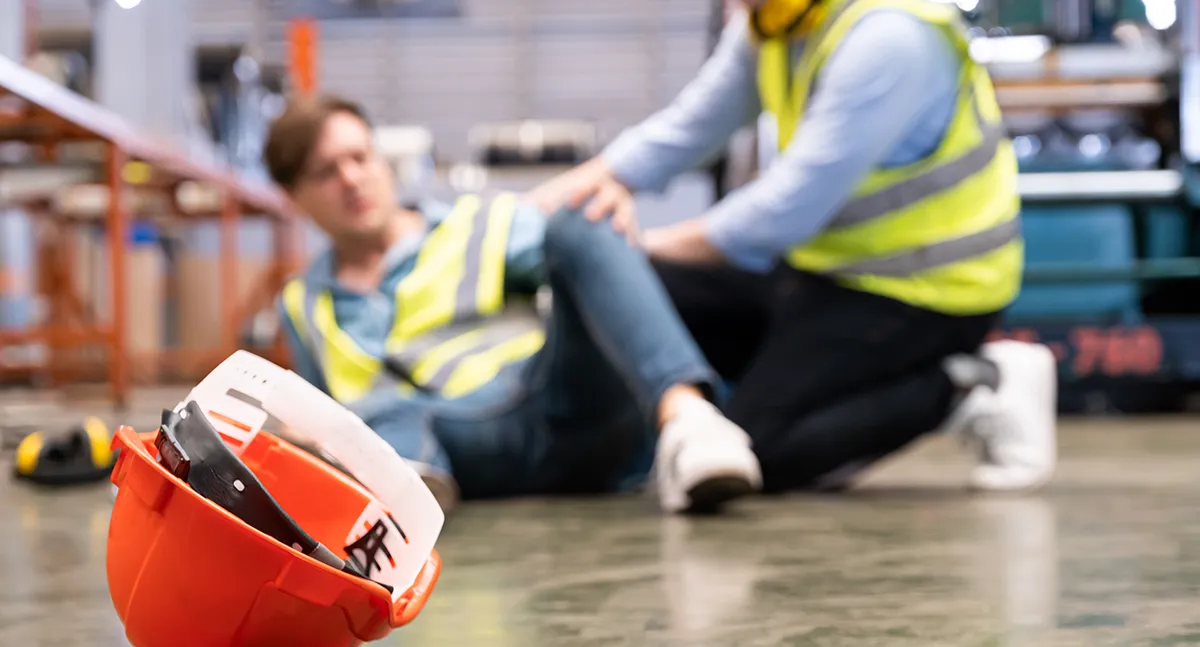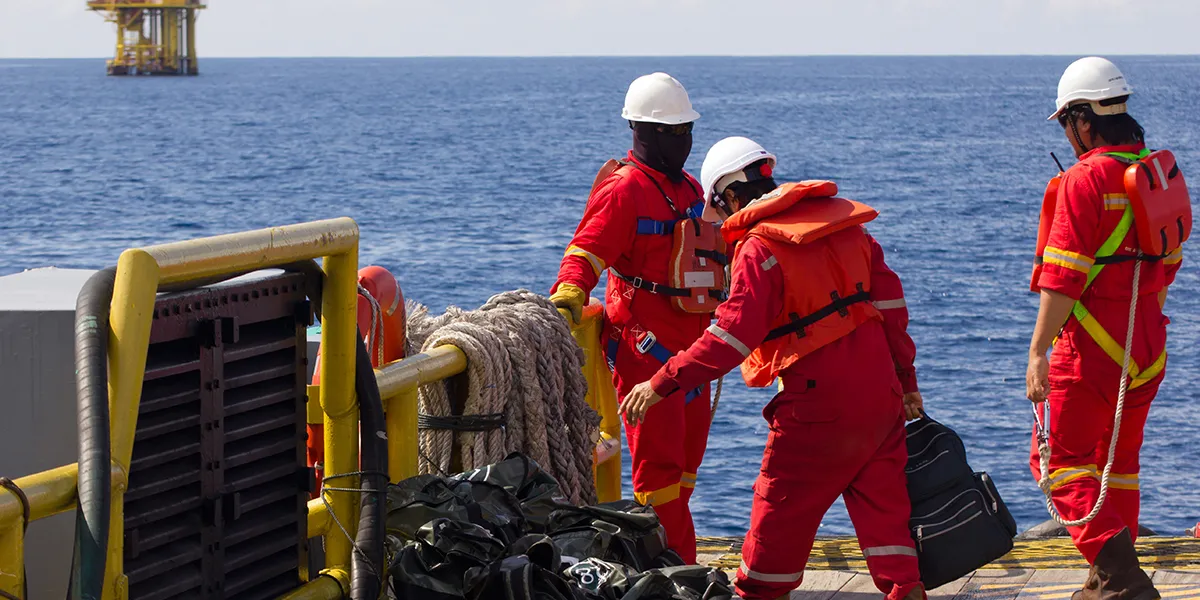2023 Round-Up: Occupational Health and Safety Violations Across Regions

Workplace safety remains a critical concern across various industries around the world, from construction and mining to manufacturing and logistics. Despite efforts to prevent accidents and injuries, the statistics from 2022/2023 reveal a mixed bag, with some regions showing a downward trend while others lag in progress.
The global impact is staggering. The UN Global Compact reports an estimated 2.78 million workers are fatally injured, and an additional 374 million suffer non-fatal injury through occupational health and safety accidents each year. These numbers translate to 7,500 lives lost every single day around the world due to unsafe working conditions.
This guide highlights the regional disparities in health and safety performance across the globe in 2023, the most common causes of injury, and how to enhance health and safety through technological developments.
Regional disparities in health and safety performance
Falls – the most common cause of workplace accidents
Rising heat means rising heat-related incidents
The benefits of wearable technology
Regional disparities in health and safety performance
Europe has varying degrees of occupational health and safety performance across its nations. The UK, for instance, has comparatively low rates of fatal injury, but the numbers remain concerning. The Health and Safety Executive reports an estimated 561,000 workers experiencing non-fatal injuries and 135 fatalities in 2022/23, resulting in 35.2 million working days lost and a staggering cost of £20.7 billion in 2021/22.
In contrast, France and Denmark have some of the worst figures for non-fatal occupational injuries in Europe. The International Labour Organization reported 3,043 and 2,914 injuries per 100,000 workers, and 2.6 and 1.4 fatalities per 100,000 workers, respectively. As a comparison, the UK had 692 injuries and 0.8 deaths per 100,000 workers.
Singapore witnessed a decline in injuries in the first half of 2023, with its Ministry of Manpower reporting 6,025 injuries and 10,897 minor injuries per 100,000 workers. The manufacturing – driven by metalworking – and construction sectors contributed 54% of the fatal and major injuries in the first half of 2023.
The UAE has acknowledged that, despite efforts to implement safety management systems, it could still make improvements in terms of overall workplace safety and safety culture, governance and planning.
Falls – the most common cause of workplace accidents
Falls from a height remain as the leading cause of workplace injuries globally. In the UK, the Health and Safety Executive reported that falls accounted for 8% of reported non-fatal injuries and 27% of all fatal injuries in 2022/23, with construction being the most affected sector.
Australia and Singapore echo similar trends, emphasizing the need for comprehensive fall prevention strategies. Of Australia’s 195 worker fatalities in 2022, 9% were due to falls from a height, according to Safe Work Australia. Meanwhile, in Singapore, falls from a height in the first half of 2023 accounted for 42 injuries and 4 deaths per 100,000 workers, according to the Ministry of Manpower.
In Dubai, 35% of accidents were falls from height, which caused 38% of total fatalities, according to Dubai Municipality, the organization formed to carry out investigations into work-related accidents in the region.
Rising heat means rising heat-related incidents
2023 is likely to become the hottest year since records began in 1850. As global temperatures increase, heat-related incidents such as heat stress, heat stroke, heat exhaustion and fatigue are becoming more prevalent. The International Labour Organization’s ‘Working on a Warmer Planet’ warns of significant productivity losses due to extreme heat.
Many Middle Eastern states have imposed summertime work bans to mitigate risks, where average temperatures are 39.4°C/102.92°F. Still, in Kuwait, there were 7.2, 7.6 and 9.4 reported heat-related injuries per day in the summer months of June, July and August, respectively.
KPMG’s ‘Navigating Extreme Heat In Australia’ report suggests that the impact of heat stress from illness and injury, and a reduction in people’s capacity to work, translated to an estimated AU$7 billion cost to the economy during 2013–2014. But, with rising temperatures, these figures will now undoubtedly be significantly higher.
Despite this, reports from Dubai highlight violations of heat safety regulations that continue to endanger workers’ health. During 2023’s COP28 event, the ‘This Weather isn’t for Humans’ investigation found that migrant construction workers were put to work outdoors in extreme heat, posing severe threats to their health.
With temperatures in Dubai as high as 42°C / 107.6°F at the time, the combination of heat and humidity meant construction workers were likely exposed to exceeded upper limits where work can safely be performed, according to internationally recognised standards. Even if it is possible to limit global warming by the end of the century to 1.5°C / 34.7°F above pre-industrial levels, the accumulated financial loss due to heat stress is expected to reach US$2,400 billion by 2030, according to the International Labour Organization.
Costs to businesses
Beyond the human toll, workplace accidents and injuries incur substantial financial burdens for businesses. In the UK, annual costs amount to £7.7 billion, with hefty penalties for non-compliance.
Similarly, Deloitte Access Economics research, commissioned by Safe Work Australia, underscores the economic benefits of preventing work-related injuries and illnesses, with potential gains of $28.6 billion and the creation of 185,500 jobs annually in Australia by removing work-related injuries and illnesses.
Addressing the challenges
Unsafe working conditions stem from various factors, including governance gaps, inadequate legislation and a lack of preventive culture. Governments and businesses must collaborate to address these challenges effectively. While regulatory frameworks exist, leveraging technological advancements can further enhance workplace health and safety measures.
The benefits of wearable technology
In addition to improved regulation, guidelines, education and implementation, technology is now enabling safer work environments and curbing risks.
For example, Bodytrak® is a wearable device that leverages multiple safety features to monitor physiological responses to workplace stressors and challenging environments. By providing precise, real-time data, Bodytrak empowers employees and organizations to identify potential hazards swiftly and enables early intervention to prevent accidents before they happen.
Bodytrak also has an intrinsically safe option, with ATEX and IECEx certification, which allows its use in the most hazardous environments where hot temperatures, flammable gasses and vapors are present.
The Bodytrak solution translates real-time data into actionable information, helping individuals and organizations gauge vulnerability to heat stress, falls, fatigue levels and excessive exposure to noise to prioritize and manage interventions.
Conclusion
As we reflect on the sobering statistics and the human toll of workplace accidents and injuries, it’s evident a step change is needed in addressing occupational health and safety. As well as ongoing regulatory adaptations, guidance and education, technology will likely significantly impact health and safety at the individual and organizational levels.
Technological innovations such as Bodytrak offer promising solutions by providing real-time data and insights that allow prevention or instant response to incidents. Wearable technology will enable companies to proactively identify risks, mitigate hazards and create safer work environments.




